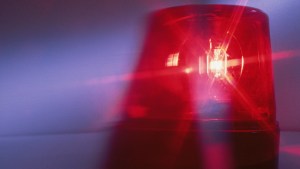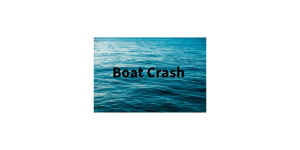What Made Orange Great: The Mystery of the Josiah H. Bell
Published 5:15 am Wednesday, January 19, 2022
|
Getting your Trinity Audio player ready...
|
By Mike Louviere
The Josiah H. Bell began life in Jeffersonville, Indiana. Eventually she worked her way to the Trinity River in Texas. Built with a sharp prow and 400 horsepower steam engine, she was a formidable foe to a lot of the obstacles found in the river. She could plow her way across shallows because of her heavy, pointed bow. Most boats of that time were shallow draft, with a rounded bow and would become grounded in the shallows and would often have to wait for the water level to rise. The Bell could push through brush piles that would often build up in the rivers. She was like a river-bulldozer. Her carrying capacity of 1800 bales of cotton also made her a vessel that could carry a large load of cargo of any kind.
When the Texas and New Orleans Railroad was being run from New Orleans to Houston, the Bell was purchased by the railroad and put to use hauling railroad construction supplies on the Neches and Sabine Rivers and the upper part of Sabine Lake.
Trending
After the first Union invasion at Sabine Pass and the fall of Fort Sabine, the Bell was converted to a cotton clad gunboat, outfitted with cannon and along with the Uncle Ben made ready to break the Union blockade of Sabine Pass.
On January 21, 1863, she and the Uncle Ben engaged the Union warships Velocity and Morning Light just offshore of Sabine Pass. The Bell had a 64 pound rifled gun mounted in the bow. The gun was named the “Annie” in honor of Lt. Dick Dowling’s wife.
The Confederate and Union boats began a running gun battle about 8 a.m. There was a slight breeze that enabled the Union sailing vessels to keep a distance of about two miles between themselves and the Confederate vessels. However, the wind changed and the powerful Confederate steamboats were able to close the distance and open fire. Lt. Dowling was the gunner of the 64 pounder on the Bell. Several of Dowling’s shots severely damaged both ships. In addition, the accurate cannon fire of the Uncle Ben also caused damage to both ships. After a running fight of 30 miles, both Union vessels surrendered, were boarded by the victorious Confederates and sailed back to Sabine Pass.
On September 8, 1963 the Bell, Uncle Ben, and the Florilda assisted the forces at Ft. Griffin in defeating the Union invasion forces that were attempting to invade Texas. Their heavy firepower added assistance to the firing of the ground forces.
The Bell remained in the Sabine Pass and Sabine Lake area until late in the war when she was brought to the Levingston shipyard in Orange to be converted from a cotton clad gunboat into a blockade runner. She was being refitted when the war ended. With her pointed bow she could take on the offshore seas, however, her shallow draft would not make her suitable for deep sea voyages. Her service would be somewhat limited.
At the end of the war, it was learned that Union occupation forces would soon be coming to Orange, so the decision was made to not allow the Bell to fall into their hands. The boat was stripped of all useable piping, the boiler, and the engine. The engine would become the power plant for the Lutcher and Moore Lower Mill. It would operate as long as the mill operated and then be sold for scrap metal. The masts of the Bell were removed and the hull was towed four miles downriver from Orange and sunk. Years later the mystery of her sinking would arise.
Trending
The harbor at Orange at that time was along the river from the location of the current shipyard at 2nd and Front Streets, down the river to the foot of Moss Street. As the river flowed through Orange it made a series of bends. Due to the swiftness of the current and the degree of bends, the depth of the harbor area at Orange stayed about 40 feet deep.
When the forces of the 37th Illinois Infantry began the occupation of Orange they began to assemble ships and steamboats in the harbor. The intent of the governing forces was to assemble as many formerly Confederate ships as they could find in the area and then sell them off to recoup some of the financial losses they had incurred in the war years.
In September 13, 1865 a major hurricane blew through Orange. Of the 400 houses in Orange, only three were left standing. All of the 20 vessels that had been assembled in the harbor were sunk. In the aftermath of the destruction and the rebuilding of Orange, no thought was given to the sunken vessels in the harbor, or the Josiah Bell.
Over a century after the sinking of the Bell and with an interest in the history of Orange and the War Between the States, some began to wonder not only why the Bell was sunk, but why she was sunk and where she was sunk.
First of all, the Bell had been refitted and was in nearly new condition. Why was she being fitted as a blockade runner when there was no cotton left to send through the blockade to sell? Was there any real need for a blockade runner? If the object was merely to keep her from falling into Union hands, why was she not sunk in the harbor? The harbor’s depth was sufficient to keep her from being raised. The vessels sunk by the hurricane left nothing above water and have never been a hazard to navigation.
The Bell was towed to Ford Cut by Pavell Island. Years earlier, the Bell had plowed across the water covered sand bar several times to cut the channel that was called Ford Cut. This allowed shallow draft vessels a short cut around Pavell Island instead of having to go the longer way around the bend of the river. The depth of Ford Cut was only about 12 feet. The Bell could be easily located, divers could go on her, possibly, she could be raised.
Was there a cargo on the Bell that the Confederates wanted to keep from the occupying Union forces?
There were some Confederates that were beginning to travel south through Texas to Mexico with the goal of reforming their government. Had some armaments been taken to Orange and loaded on the Bell for transport to Mexico? There are 39 kegs of Mexican silver coins that are not accounted for. They were in transport at the time the war ended, but no one seems to know what happened to them. There is speculation that they were buried in a cemetery in Danville, Virginia. All efforts to locate them there have been unsuccessful. They seem to have vanished into thin air.
The Texas Archeology Studies Association (TASA) is a group of local historians that try to locate and document wreck sites on the Sabine and Neches Rivers, Sabine Lake and sites in Louisiana. Over the years they have added updated, high-tech equipment to their ability to search and document.
After viewing an aerial photograph of the Sabine River in the Conway’s Bayou and Pavell Island area, they found what appeared to be the outline of a ship near Pavell Island.
In about 1940, in preparation for the upcoming war and shipbuilding in Orange there was a need to dredge and straighten out bends in the river to facilitate the movement of shipping into and out of Orange. One of the projects was to dredge Berwick Cut, at the mouth of the Port of Orange. Berwick Cut would adjoin Ford Cut. There is a small island, sort of oval shaped. This is what TASA saw on the aerial photograph.
Speculation began that this could be the resting place of the Josiah H. Bell. For years it was supposed that the Bell was located in the ship graveyard at the mouth of Conway’s Bayou. There were 19 wooden cargo ships sunk there at the end of World War I. Among the 19 long slender outlines was one that was shorter and wider. It was thought that could be the Bell. However, all evidence points to Ford Cut as being the site of the Bell’s sinking.
Bruce Lockett, the Director of TASA, started detailed research of the Ford Cut site and in 2004 conducted a series of probes that showed the wreck was of a similar size and shape of the Bell. Later magnetic studies showed evidence of side paddle wheels.
“Everything points to this “island” being the location of the Josiah H. Bell. The distance from Orange is four miles. The probes and magnetic studies show a shape like that of the Bell. When the Navy dredged Berwick Cut, they left this very small island in the middle. They had to know that something was there or they would have not left what they left. We are as sure as we can be that this is the Bell. We will keep doing studies and maybe one day we will be able to find out if she has a cargo and what kind of cargo she is carrying,” said Lockett.
The ”island” in Ford Cut is not an island of sand and dirt that one can walk upon, rather it is an island of mostly marsh grass and sand, a morass. There has never been an explanation of why this was left on the occasions when Ford Cut has been dredged. Is it because it is the wreck of the Josiah H. Bell?







